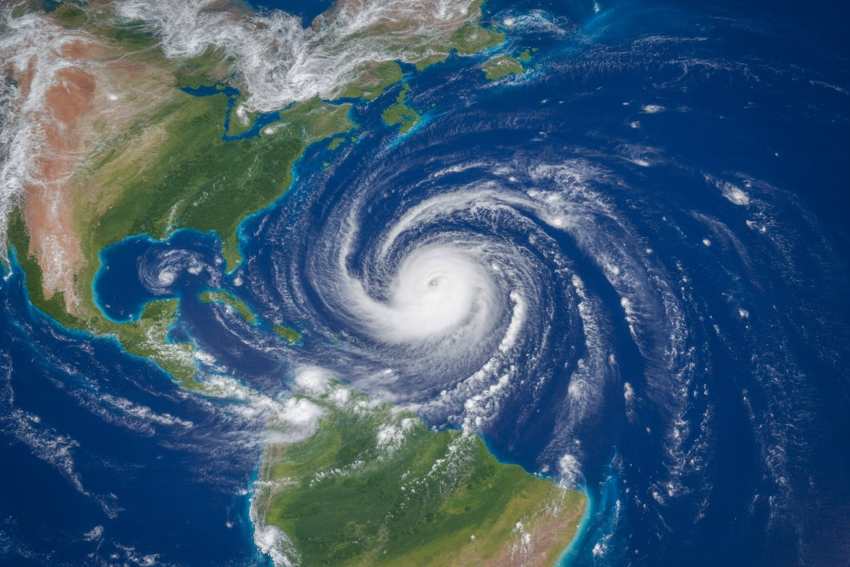Published on August 14, 2025
Severe weather monitoring systems have identified multiple tropical storm developments and subtropical system movements across the Indian Ocean, Pacific Ocean, and surrounding regions. These updates, spanning India, China, Fiji, Australia, and key Pacific nations, provide critical insight for both local residents and international travelers. With weather systems like Tropical Storm Podul in the Western North Pacific and subtropical circulation in the Central Pacific, tourism hotspots may experience disruptions ranging from flight cancellations to coastal activity restrictions.
North Indian Ocean – No Cyclone Activity but Continuous Monitoring
The latest forecast for the North Indian Ocean, covering from the Malay Peninsula westward to Africa’s coastline, indicates no current tropical cyclones, disturbances, or subtropical systems. While this may be reassuring for immediate travel plans in South Asia, forecasters advise travelers to remain alert during August, which is still within the active monsoon and cyclone potential period. Popular tourist destinations like the Maldives, Goa, and Sri Lanka benefit from calm seas for now, but tour operators and airlines are maintaining contingency plans.
Advertisement
South Indian Ocean – Stable Conditions but Watching for Change
Advertisement
The South Indian Ocean zone, stretching from 135°E west to Africa, shows no active tropical cyclones or disturbances at present. Although conditions remain stable, the region has a history of sudden storm development during transitional weather phases. Cruise lines operating between Mauritius, Madagascar, and the Seychelles continue to monitor ocean forecasts to safeguard itineraries, as even distant systems can cause swells affecting port access.
Northwest Pacific – Tropical Storm Podul and Subtropical System 99W
Tropical Storm Podul’s Path Near China
In the Western North Pacific, Tropical Storm 16W (Podul) was last tracked near 24.3°N, 116.9°E, approximately 191 nautical miles northeast of Hong Kong, moving west-northwest at 20 knots. With maximum sustained winds at 45 knots and gusts up to 55 knots, Podul’s trajectory and intensity pose risks to coastal travel in southern China. Ferry services in affected provinces, including Fujian and Guangdong, may face suspension, and flights from regional airports could see delays.
Subtropical System 99W Near Midway
The subtropical system identified as 99W is located near 27.7°N, 179.6°E, west of Midway. Classified as a hybrid between tropical and midlatitude cyclone characteristics, this system is unlikely to transition into a full tropical cyclone due to unfavorable environmental conditions such as dry air intrusion and cooler sea surface temperatures. For trans-Pacific flights between Asia and the U.S. West Coast, its broad wind field may create mild turbulence, prompting route adjustments.
South Pacific – No Current Cyclone Activity
The South Pacific region, from the west coast of South America to 135°E, reports no active cyclones or disturbances. This stable forecast benefits tourism in island nations like Fiji, Samoa, and Tonga, where the absence of storm threats supports uninterrupted travel schedules. However, given the seasonal variability, operators continue to prepare contingency plans for sudden developments, especially affecting inter-island ferries and resort operations.
Australia’s Cyclone Outlook – Historic Data and Caution
Western Region
Historical reports, such as the movement of Tropical Cyclone Karim in 2022, highlight the potential for cyclones to develop and move towards Australia’s western coastline. While no active systems are currently forecast, maritime operators between Perth, Cocos (Keeling) Islands, and Indonesia remain vigilant. The region’s remoteness makes air and sea connectivity crucial, meaning even distant systems can create logistical challenges.
Northern Region
Northern Australia, including the Gulf of Carpentaria, is currently free of significant lows, with no development expected in the immediate forecast period. This is favorable for tourism in Darwin, Arnhem Land, and Queensland’s outback coast. Still, given the area’s vulnerability to late-season cyclones, accommodation providers keep weather contingency protocols ready.
Eastern Region
The Coral Sea and northern Tasman Sea are also in a very low risk phase for cyclone formation. This is positive for Great Barrier Reef tourism and marine excursions, which rely heavily on calm weather for diving and snorkeling conditions. However, operators stress the importance of checking marine weather bulletins before travel.
Fiji and Surrounding Pacific Waters – Calm but Prepared
Fiji’s meteorological outlook shows no significant tropical disturbance in its forecast zone. For travelers heading to Nadi, Suva, or island resorts, this provides assurance of stable travel conditions. Yet, regional tourism boards remind visitors that the Pacific cyclone season can shift quickly, and travel insurance covering weather disruptions remains a wise choice.
Impact on Travel and Tourism
Tropical storms and cyclones can disrupt travel in multiple ways, from grounding flights and delaying ferries to prompting evacuation advisories in coastal zones.
- Air Travel: Airports in storm-prone regions may implement rolling delays or cancellations as systems approach. International carriers adjust flight schedules to avoid turbulence and crosswinds.
- Cruise Tourism: Cruise lines often reroute or shorten itineraries when storms threaten ports of call, impacting tourism-dependent coastal communities.
- Resort Operations: Beach closures, water sports restrictions, and supply chain interruptions can occur in popular tourist spots, even if the storm is offshore.
By staying updated on storm developments, travelers can make informed itinerary changes, reducing both safety risks and financial losses. Tourism boards in the affected countries are working with airlines, maritime authorities, and hospitality providers to keep disruptions minimal.
Travel Advisory – Practical Tips
- Check Official Forecasts Daily: Weather patterns can change rapidly; daily updates help travelers anticipate delays.
- Book Flexible Tickets: Choose refundable or changeable reservations during peak cyclone seasons.
- Secure Travel Insurance: Ensure coverage includes weather-related disruptions and cancellations.
- Monitor Airline and Cruise Notifications: Transport providers often release real-time updates via mobile apps and email alerts.
- Avoid Risk Zones During Storm Alerts: Re-route plans if a storm warning is issued for your intended destination.
Broader Economic and Tourism Perspective
While current forecasts indicate stable conditions in several key travel regions, the presence of Tropical Storm Podul near southern China and the subtropical 99W system in the Pacific serves as a reminder of nature’s unpredictability. Countries reliant on tourism—such as Fiji, Australia, and coastal provinces in China—are increasingly integrating advanced weather monitoring into their tourism strategies. These measures not only protect visitors but also sustain economic stability by minimizing last-minute cancellations.
The 2025 tropical storm season demonstrates the importance of synchronized communication between meteorological agencies, transport providers, and tourism boards. By delivering timely information, these stakeholders can ensure both safety and continuity for the travel industry.
Conclusion – Staying Ahead of the Weather
From India’s calm seas to China’s storm-watched coastlines and Fiji’s clear skies, the tropical weather outlook offers a mixed but largely favorable picture for travelers. With the global tourism sector’s heavy reliance on predictable weather, storm monitoring remains essential. The coming weeks will determine whether Tropical Storm Podul dissipates harmlessly or prompts wider travel disruptions.
For those planning journeys across the Indian Ocean, Pacific islands, or Australia’s coastal regions, staying informed ensures safe and enjoyable travel experiences—even during nature’s most unpredictable moods.
Advertisement
Tags: cyclone forecast and travel impact 2025, international storm watch and tourism alerts, tropical cyclone outlook and travel advisory, tropical storm updates India China Fiji Australia Pacific, upcoming storms and tourism safety news
Advertisement
Tags: cyclone forecast and travel impact 2025, international storm watch and tourism alerts, tropical cyclone outlook and travel advisory, tropical storm updates India China Fiji Australia Pacific, upcoming storms and tourism safety news
I want to receive travel news and trade event update from Travel And Tour World. I have read Travel And Tour World’sPrivacy Notice.
Thursday, August 14, 2025
Thursday, August 14, 2025
Thursday, August 14, 2025
Thursday, August 14, 2025
Thursday, August 14, 2025
Thursday, August 14, 2025
Thursday, August 14, 2025
Thursday, August 14, 2025




